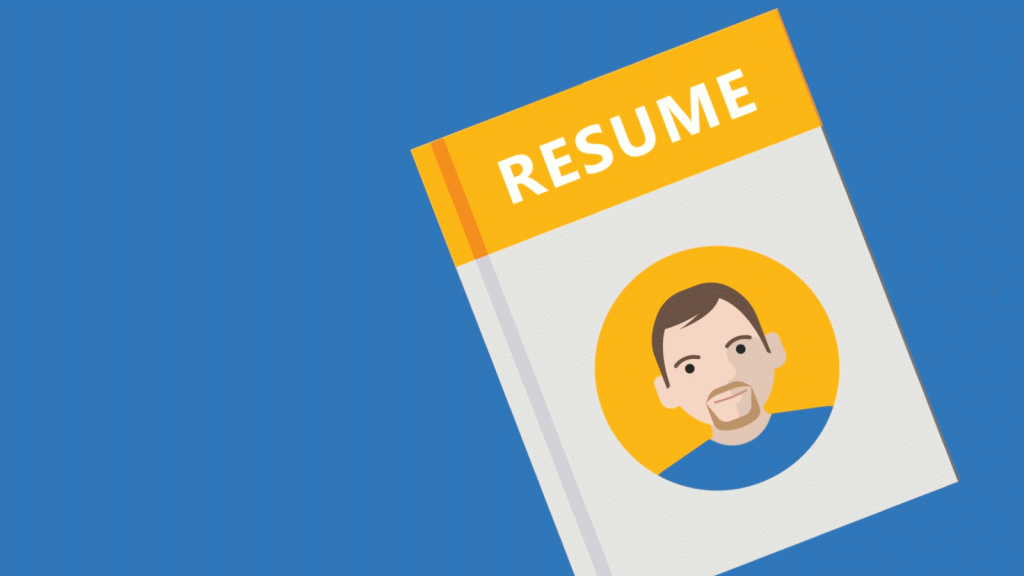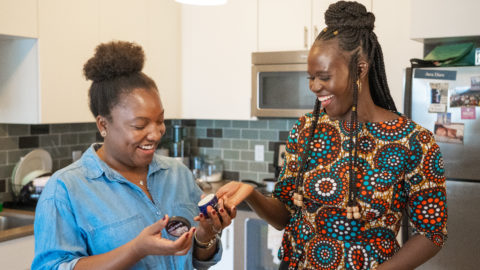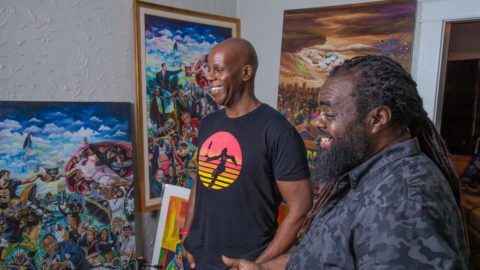When you want that job, tell them your story
One Microsoft recruiter shares how you can use storytelling techniques to show recruiters and hiring managers who you are during the job hunt
Building your career is a journey filled with challenges, excitement, and forks in the road. And journeys are easier with maps. In this column, job experts answer your questions and deliver advice to help you take the next step.
Question: I feel like my résumé doesn’t really show the real me. How can I help people looking at my resume get a better idea of who I am?
Answer: Humans have relied on storytelling forever to share their experiences and journeys and to connect with each other. Not only does storytelling pass along useful information, but it conveys emotion and helps uncover universal themes that others will relate to. And you can even use the power of storytelling in your job search.
“Your story should reflect your truth, your authentic self, and the great work you’ve done,” said Chris Bell, an executive recruiter at Microsoft. “We’ve all had life and professional experiences that have helped shape our unique perspective on the world and our personal impact.”
Storytelling is a skill in and of itself, he points out. “Through your résumé, LinkedIn profile, and interviews, your communication and selling skills are demonstrated. Plus, when you tell a story, you’re displaying your ability to create an emotional connection.”
Here are Bell’s top recommendations for how to use storytelling techniques at every checkpoint (i.e., résumé, LinkedIn profile, interview) of your job hunt.
Infuse your résumé with narrative
When writing your résumé, don’t rely on keywords and jargon to tell your story. Think of using your skills and background as a starting point and then creating a narrative, Bell said. Avoid speaking in shorthand and relying on sentence fragments.
For example, he often sees experience statements such as, “Drove benefit packages, negotiating multiple options for benefits at a cost reduction of 29 percent.”
“What does ‘drove benefit packages’ mean?” he asked. “Was this person the benefits administrator or the individual selling or selecting benefits packages?”
Take a look at his expanded example, which adds context and answers an interviewer’s potential follow-up questions at first glance:
“I was responsible for the company’s benefit package selection process that entailed driving the RFP process with five vendors. I led a collaborative team that negotiated a multi-option benefit package that exceeded our employees’ needs while reducing benefit spend by 29 percent.”
By telling the job highlights narratively and focusing on impact, job seekers avoid vagueness and open the gates for a deeper conversation about how they approach their work and why it’s successful.
Don’t over-focus on résumé length, Bell said. While the standard recommendation is two pages, Bell believes that focusing first on storytelling will ultimately lead to the most readable version of your résumé. “Write what’s relevant; people will read,” he said.
Tell a story with your LinkedIn profile
Don’t be afraid to show your personality and call out your professional identity with your LinkedIn profile, Bell said. One place you can do this is with your profile headline. Bell shows a bit of personality with his own headline: Definitely a Recruiter | Leader and Learn-It-All.
When crafting your headline, consider the role you seek, relevant keywords, the type of company you see yourself working at, your personal brand, and the story you’d like to tell. Bell calls out that his field is recruitment and that he’s a leader who’s constantly learning and finding ways to improve his craft.
Next, consider the Summary section, which gives people a deeper snapshot of who you are, where your passions lie, and what you bring to the table. This is also a space where you can link to other places online where recruiters and hiring managers can learn even more about you, such as social media platforms, a podcast you run, or a blog that you manage. Keep your bio succinct, personable, and relevant, and continue to create the narrative with first-person phrasing. Tell the story of who you are.
The Experience section of your LinkedIn profile allows you to be more granular about your goals, learnings, and successes in each role. Bell advises that you steer clear of the résumé format in this section and take this opportunity to tell the story.
For instance, rather than say “I managed five events each year,” connect the dots between the work you did and who you are. Here’s an example:
I love processes and data. Yes! I admit it. Plus, I enjoy taking opportunities to train others.
At A-Z Event Planning, I made it a personal goal to create event strategy processes to make my and my colleagues’ lives easier while making our clients’ smiles bigger. While my charter was to run five events per year, I also took it upon myself to use my forecasting experience to develop a more “on the nose” event performance dashboard to predict attendance rates. This allowed us to plan better and make cost-saving recommendations to our clients. I also created an “event in a box” program that we rolled out to our international offices. This not only simplified the overall company’s processes, it also led to consistent, industry-leading programming across the board.
I absolutely enjoyed this job because it allowed me to tap into my hidden talents and learn more about international event planning. Since I spearheaded the programs, I was also asked to train my colleagues across the country and internationally.
In this example, the job seeker showcases their personality, drive, and skillsets. You want readers to feel your passion, enthusiasm, and knack for getting the job done.
Tell your story in an interview
“Everyone should be able to tell their own story,” said Bell. “And it is important to practice.”
When you are asked “tell me about yourself,” this is the moment to tell your truth, but keep it focused on what’s relevant to the job. For example, this is not the moment to explain that you were raised on a farm with five siblings—unless your farming background is relevant to the job you seek (maybe the company you want to work for creates technology solutions for farmers); if so, by all means connect those dots.
Keep your answer under two minutes, he said, but offer details about key roles, learnings, and personal experiences that tie into the role that you seek. Try to use a narrative arc to show your evolution as an expert in your space and to explain how you’ve built on your experience to get you to this point. Again, practice makes perfect.
Also have a narrative ready for anything recruiters or hiring managers might zero in on, such as short stints in a role or gaps in employment. “In any interview, you want to come across as polished, not stumped or appearing as though you have something to hide,” Bell said.
A popular question to anticipate and approach through storytelling is, “Tell me about a time when you failed. How did you handle it?”
“People fail,” said Bell. “But, many people don’t have a cohesive story to explain the situation.”
As with any behavioral question, he suggests that job seekers use the STAR method to talk through their answer. To make the story more interesting and relevant, Bell suggests that you also explain what you learned and what you would have done differently.
Don’t treat your responses as answers, but as stories that support the idea that your unique experiences, passions, and drive make you the best person for the job.
Bring the whole story together
Bell said that through storytelling, you can make an emotional connection that helps position you as memorable and indispensable.
“The right words and experiences help convey your story in a way that emotionally connects with others,” said Bell. “Remember, this is your story.”



















